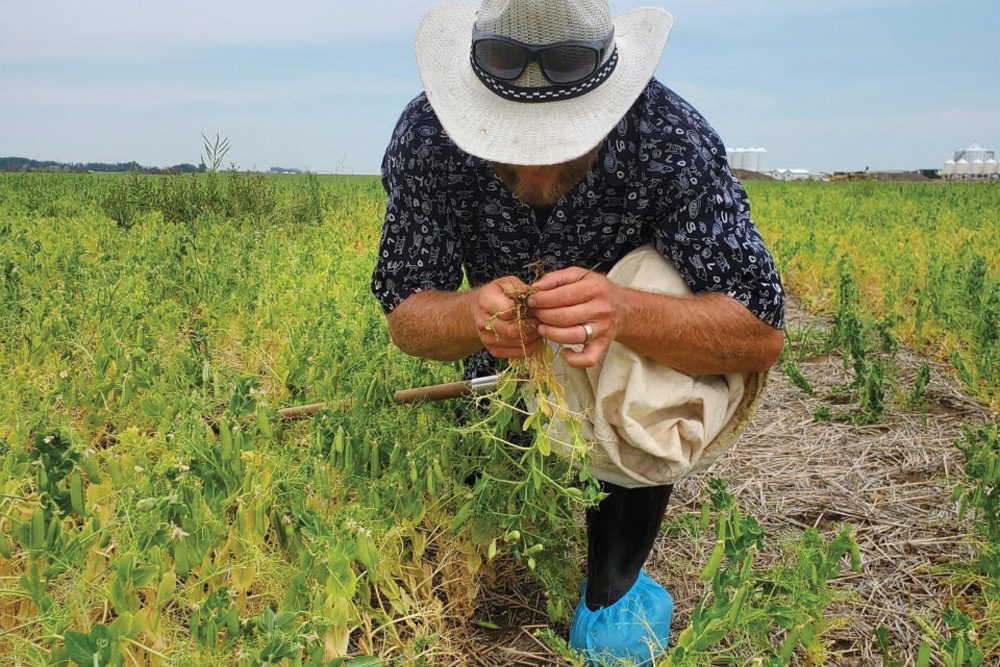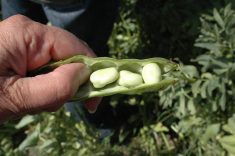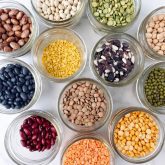It’s not just the drought hitting production — global demand is up, shipping disrupted and processing plants coming online
It’s definitely unusual times for the Prairie pulse sector, and save for a lucky few, it’s a year most will be glad to see the back of.
“It’s rare to see such a large cross-section of the industry impacted by drought, but that is very much the case here,” said Pulse Canada president Greg Cherewyk.
There’s no shortage of would-be buyers of western Canadian peas and lentils this year and given production numbers, they’re likely to draw stocks down to extremely low levels.
Lentil production will fall to roughly two million tonnes this year — down about 800,000 tonnes from a year ago, said Cherewyk. Combined with last year’s carry-over, there will be about 2.6 million tonnes of lentils available for sale, which is the lowest amount since 2012.
In peas, the story is even more dramatic.
“We’re looking at roughly 30 per cent lower yield than the five-year average,” he said.
Given the drought impact and reduced acreage this year, Cherewyk expects a 2.6-million-tonne crop — a massive two-million-tonne fall from a year ago.
But the big numbers hide the individual stories. Some growers will harvest nothing while “there are some that are getting a decent crop because of the rain and because it happened to fall during timely points within the season,” he said.
“Yellow peas are down 40 per cent while green peas are down 55 to 60 per cent — a very significant drop,” he added.
The market has noticed and prices, already strong, are climbing.
Many regions, including a large portion of the U.S., are also having production problems, and on top of that, demand (and prices) for shipping containers is sky high as China and other makers of consumer goods rush to restock store shelves in North America. Up to 50 per cent of lentils and 30 per cent of peas are shipped in containers.
“All markets looking for lentils and peas are going to be stressed this year,” said Cherewyk. “The two big lentil markets are really India and Turkey. The prices are reflecting the challenges that we are having on the supply side and the demand is going to be strong out of those two markets.”
But the demand picture is seeing almost the same amount of flux as the production situation, and “the big story is China,” he said.
The country has become a major buyer of Canadian peas and bought nearly 2.7 million tonnes of peas (almost all yellow peas) last year.
“Yellow peas are the story that everybody is watching,” said Cherewyk. “It looks like we’ll have roughly 1.9 million tonnes available for export. That’s a million tonnes less than we had last year.”
But because it uses yellow peas for pig feed, China will turn to cheaper alternatives at some point.
“As the price of peas goes higher, we start looking at how that price factors into these cost formulations in the swine industry in China,” he said.
If China moves to alternative feed sources, the next question will be what effect that might have next year if Prairie pea production rebounds.
But Cherewyk, who assumed the top job at Pulse Canada earlier this year, says that despite this year’s trials and tribulations, it’s onward and upwards for the sector.
“The trajectory and the trend for this industry is very positive,” he said. “Not only do we have strong demand from traditional markets that’s been growing year over year, but we’re one of those few industries that can point to new demand coming from the food industry and value-added processing in Canada.”
New or expanded fractioning plants (which separate pulses into protein, fibre, and starch) are coming on stream, including the world’s largest pea-processing facility, a $600-million plant built by French company Roquette that will process 125,000 tonnes of peas annually when fully operational.
“The long-term signals are very strong, but from traditional and non-traditional and new markets,” said Cherewyk.
















